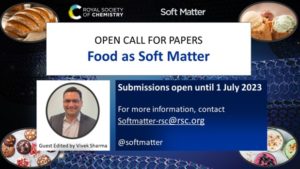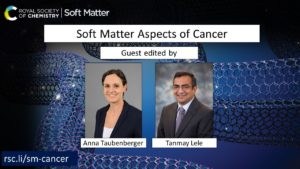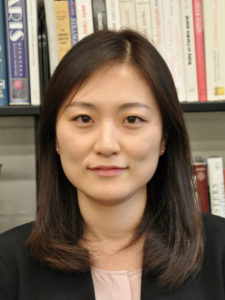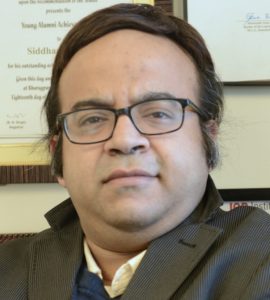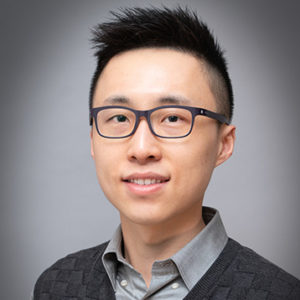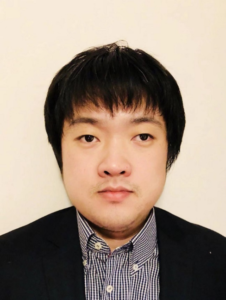
Dr. Moyuan Cao is currently a professor and principal investigator at the School of Materials Science and Engineering, Nankai University, China. He received his B. Eng. Degree (2010) and M. Sc. Degree (2013) in Macromolecular Science and Engineering from Zhejiang University, China. In 2016, he received his Ph.D. Degree in materials sciences under the supervision of Prof. Lei Jiang at Beihang University and the Chinese Academy of Sciences. He is also a member of Haihe Laboratory of Sustainable Chemical Transformations (Tianjin, China) and Smart Sensing Interdisciplinary Science Center of Nankai University. He has published over 60 peer-review papers in Matter, Adv. Mater., Mater. Horiz., Adv. Funct. Mater., etc. His citation number is over 4100 with an H-index of 35. He serves as an Editorial member of Frontiers in Chemistry, Polymers, Chinese Chemical Letters and is an Advisory Board member of Materials Horizons. His present scientific interests are focused on the design and the applications of bio-inspired asymmetrical interfaces for fluid manipulation, including (1) Self-propelled fluid delivery on open interfaces; (2) Bubble manipulation on hydrophobic slippery surfaces; (3) Janus structures with superwettability for novel applications.
Find out more about his work via:
Website: https://mse.nankai.edu.cn/cmy_en/list.htm
Read Moyuan Cao’s Emerging Investigator article: http://xlink.rsc.org/?doi=10.1039/D2SM01547A
How do you feel about Soft Matter as a place to publish research on this topic?
Even as an undergraduate student, I knew Soft Matter as an important journal in the field of polymers, interfaces and fluid dynamics. As a traditional journal, Soft Matter has published a lot of theoretical and scientific papers which can serve as inspiration and provide references for analyzing related experimental phenomena. When my students feel puzzled about some theoretical examples to explain a result, I may ask them to find some references in Soft Matter. For this review article we published, lubricant-infused slippery surfaces have been considered as a new and useful functional interface for versatile applications (1). The design, mechanism, and applications of such interfaces are of interest, and the related information can be helpful for researchers in the fields of materials chemistry, physics, interfacial science and other areas. Therefore, in my opinion, such topics that combine theory and applications are suitable for Soft Matter.
What aspect of your work are you most excited about at the moment and what do you find most challenging about your research?
Our research is focused on fluid-manipulating interfaces: most of our ideas are inspired by nature, so we call them bioinspired interfaces. The first question in such research is to understand the natural evolution logic for special functions. Why does an organism adopt such complex structures for controlling fluid manipulation such as drinking and sweating? After understanding this logic, artificial interfaces with similar or improved performance can be designed, such as the lotus-like Janus floater (2), the Pistia-inspired 3D floater (3), and the cactus-inspired fog collector (4). The most exciting part of bioinspired research is finally knowing nature’s secret and unraveling it with artificial design. It makes me feel “Nature, I know you”, just like the saying “Man thinks, God laughs”. We might not totally understand the inner logic of even one simple creature, but what we can do is illustrate one little aspect of nature’s design. The most challenging part of our research is knowing how to bridge fundamental research with practical applications. Although we have designed and fabricated lots of materials for fluid manipulation, the practical application of such materials in industrial processes is still lacking. We believe that our materials can be useful and valuable in our daily life. However, it is a very difficult and complicated process for us to transform fundamental results. We hope that we can propose one or two products relating to fluid manipulating interfaces some day.
In your opinion, what are the most important questions to be asked/answered in this field of research?
The most important question in the field of my research is why nature has an ultrahigh efficiency of mass transfer. Compared with our modern techniques, nature has a lot of advantages in mass transfer, energy conversion, information storage etc. With respect to fluid manipulation, nature’s strategy is always fantastic. Can you believe that the tiny proboscis of a butterfly or a mosquito sucks viscous liquid without blocking? Do you know how a tall tree can continuously uplift fluid to over 100m high? The ultrahigh efficiency and the ultralow energy consumption of nature’s design is both mysterious and enlightening for us.
Can you share one piece of career-related advice or wisdom with other early career scientists?
Choose your own adventure, make your own brand, and stick with it…..
References
(1) Xinsheng Wang, Haoyu Bai, Zhe Li, Moyuan Cao*; Fluid manipulation via multifunctional lubricant infused slippery surfaces: principle, design and applications, Soft Matter, 2023, D2SM01547A.
(2) Yuyan Zhao, Cunming Yu, Hao Lan, Moyuan Cao*, Lei Jiang*; Improved interfacial floatability of superhydrophobic/superhydrophilic Janus sheet inspired by lotus leaf, Advanced Functional Materials, 2017, 27: 1701466.
(3) Yifan Yang, Haoyu Bai, Muqian Li, Zhe Li, Xinsheng Wang, Pengwei Wang*, Moyuan Cao*; An interfacial floating tumbler with a penetrable structure and Janus wettability inspired by Pistia stratiotes, Materials Horizons, 2022, 9: 1888.
(4) Haoyu Bai, Tianhong Zhao, Xinsheng Wang, Yuchen Wu, Kan Li, Cunming Yu*, Lei Jiang, Moyuan Cao*; Cactus kirigami for efficient fog harvesting: simplifying a 3D cactus into 2D paper art, Journal of Materials Chemistry A, 2020, 8: 13452.
Comments Off on Soft Matter Emerging Investigator – Moyuan Cao
 Tal Cohen is an Associate Professor at MIT. She joined the Department of Civil & Environmental Engineering in November 2016 and has a joint appointment in the Department of Mechanical Engineering. She received both her MSc and PhD degrees in Aerospace Engineering at the Technion in Israel. Following her graduate studies, Tal was a postdoctoral fellow for two years at the Department of Mechanical Engineering at MIT and continued for an additional postdoctoral period at the School of Engineering and Applied Sciences at Harvard University. She received the ONR young investigator award and the NSF CAREER award in 2020, and the ARO young investigator award in 2019. Earlier awards include the MIT-Technion postdoctoral fellowship, and the Zonta International Amelia Earhart Fellowship. Her research is broadly aimed at understanding the nonlinear mechanical behavior and constitutive sensitivity of solids. This includes behavior under extreme loading conditions, involving propagation of shock waves and dynamic cavitation, material instabilities, and chemo-mechanically coupled phenomena, such as material growth.
Tal Cohen is an Associate Professor at MIT. She joined the Department of Civil & Environmental Engineering in November 2016 and has a joint appointment in the Department of Mechanical Engineering. She received both her MSc and PhD degrees in Aerospace Engineering at the Technion in Israel. Following her graduate studies, Tal was a postdoctoral fellow for two years at the Department of Mechanical Engineering at MIT and continued for an additional postdoctoral period at the School of Engineering and Applied Sciences at Harvard University. She received the ONR young investigator award and the NSF CAREER award in 2020, and the ARO young investigator award in 2019. Earlier awards include the MIT-Technion postdoctoral fellowship, and the Zonta International Amelia Earhart Fellowship. Her research is broadly aimed at understanding the nonlinear mechanical behavior and constitutive sensitivity of solids. This includes behavior under extreme loading conditions, involving propagation of shock waves and dynamic cavitation, material instabilities, and chemo-mechanically coupled phenomena, such as material growth. 











